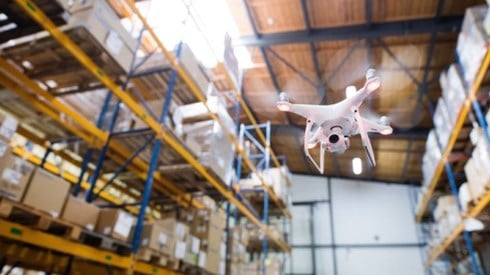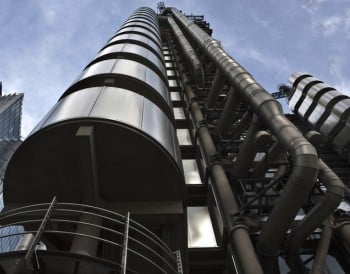Innovation and Productivity in Captive Insurers

July 25, 2018

An article in the Wall Street Journal titled "The Problem with Innovation: The Biggest Companies Are Hogging All the Gains"1 caused us to think about innovation and productivity in captive insurers. The gist of the article is that innovation, and therefore the productivity gains that result, is not evenly distributed today. That is, large companies are benefiting to a much greater degree than their smaller brethren, and the spread of technological advances from larger to smaller firms has slowed and even dissipated. We wondered to what degree this gap exists in the captive insurance industry and is it a cause for concern?
In researching ideas for this article, we came across a white paper by J. David Cummins and Xiaoying Xie published November 21, 2013, and titled Efficiency and Productivity in the US Property-Liability Insurance Industry: Ownership Structure, Product and Distribution Strategies. While the paper is almost 70 pages in length, including appendixes, it contains some very beneficial analysis. We suggest it as a good resource for captives that want to pursue a strategic and visioning exercise to determine how they stack up against insurance industry trends.
The introduction to the paper begins as follows.
In the past two decades, we have observed significant changes in the economy of the United States, which has also altered the landscape in the US property-liability (P-L) insurance marketplace. The industry has been going through the innovations in computer and communications technologies since the early 1990s that have enabled insurers to adopt more efficient insurance marketing, underwriting and claims adjusting strategies. The prevailing use of social media and telematics in recent years has also brought both opportunities and challenges to insurance companies in their operation and product development.... Meanwhile, the development of alternative risk transfer mechanisms and instruments have challenged the use of traditional insurance products to transfer risks, which places additional pressure on the insurance industry to provide quality services to maintain its profit margin.
While numerous technologies are reshaping the insurance industry, we focus on just three in this article. The question for the captive insurance reader is as follows: To what degree has your captive started to embed the use of these technologies into its business? We believe this question strikes at the heart of the issue raised in the Wall Street Journal article mentioned above. Namely, if your captive insurer is not at least exploring these ideas, you are falling behind in an "arms" race that appears to be accelerating and a technology gap that is widening.
1. Artificial Intelligence
The use of artificial intelligence (AI) to discern patterns in both underwriting and claims is growing. This includes emerging technologies such as behavioral policy pricing, virtual claims settlement, and customized service attendants. Almost all of the top primary property-casualty insurers and reinsurers are using artificial intelligence to some degree. For a look at how, we recommend the following articles.
- "How America's Top 4 Insurance Companies Are Using Machine Learning," by Kumba Sennaar, TechEmergence, July 19, 2018
- "Insurance 2030—The Impact of AI on the Future of Insurance," by Ramnath Balasubramanian, Ari Libarikian, and Doug McElhaney, McKinsey & Company, April 2018
- "5 Ways AI Will Change the Insurance Industry," by Kanopy Insurance
Captive insurers will find it more difficult to embrace AI due to the cost involved and access to the personnel necessary to implement the technology. This means captives need to look for partners to enable the adoption of AI. These partners may fall into several categories: large captive managers, fronting insurers and reinsurers, and potentially trade associations.
2. Wearables and Mobile Location Data
The advent of wearable technology combined with mobile data location will help reshape both workers compensation and liability insurance. Wearables can be used to prevent accidents in high-risk industries by ensuring workers are performing tasks in the correct manner. Combining them with mobile data location, which can pinpoint where employees or policyholders are, allows for better assessment of risk.
Obviously, there are personal privacy issues that arise with the adoption and use of these technologies. It is outside of the scope of this article to discuss these in any great detail. However, an observation about demographics in this regard is that younger generations seem to be less concerned with the intrusion of technology into their personal privacy. Therefore, as these individuals become the dominant percentage in the workforce, privacy issues surrounding the use of both wearables and mobile location devices may dissipate.
We recommend the following for readers who want to explore this trend further.
- "The Integration of Wearables and Insurance," by Kelvyn Young, Swiss Re Institute, July 12, 2017
- "The Effect of Wearables on Life and Health Insurance," by Emerson McCuin, eInsurance Training.com, October 25, 2017
- "How Car Tracking Programs Are Changing Auto Insurance," Compare.com
3. Drones
While drones may seem prosaic compared to AI and wearable technology, they are significantly impacting how property insurance is conducted. And, unlike AI and wearable technology, drones represent an area where captive insurers can compete today.
Drones are being employed to inspect insurable properties in the field easier and faster than having to send underwriters or claims adjusters on-site. Following are some ways drones are already being employed in the industry.
Roof Inspections
As most underwriters and claims adjusters know, roofs are inherently dangerous to inspect, especially after a loss due to fire or wind. Drones allow inspection from the ground or even remote locations and, if employed by a skilled operator, can reach areas that may be inaccessible to humans due to safety concerns.
Boiler Inspections
Most states require the periodic inspection of boilers and other pressure-related vessels. These can be difficult to inspect due to their size, the existence of hazardous materials, and dark interiors. Drones are replacing the need to send engineers inside these containers to conduct an examination. They can also pinpoint issues that may require close inspection, thereby reducing the time spent inside when humans are needed to perform the work.
Catastrophe Losses
By now, almost everyone with Internet access has seen video shot by drones after a catastrophe. Drones have allowed insurers to access areas damaged by a major disaster even when civil authorities may restrict access. This allows the insurer to begin to assess the extent of the loss and the impact on them from a claims perspective and to start early notification of reinsurers.
It is imperative for captive insurers to be aware of how these technologies are reshaping the insurance industry. At a minimum, captive boards should be discussing how technology initiatives impact their captive and examining the extent to which the organization will participate.
The term "fast follower" has become ubiquitous in the insurance industry. As the Wall Street Journal article mentioned above points out, being a fast follower may not be enough. A captive insurer risks falling further behind, from both an innovation and a productivity standpoint, if it fails to consider harnessing new technology.
- By Jason Douglas, Jon Sindreu, and Georgi Kantchev, July 15, 2018.
July 25, 2018







